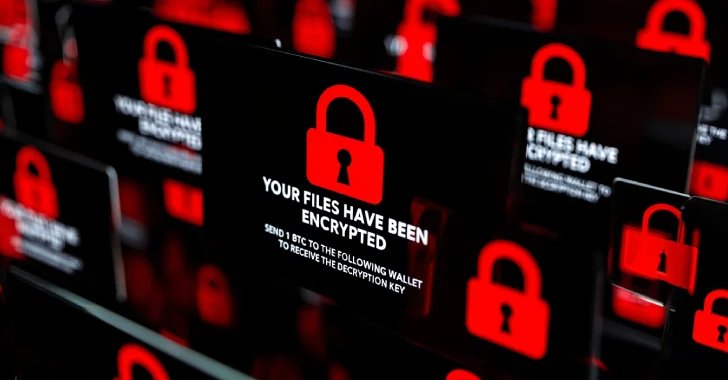Essential Insights
-
Targeted Ransomware Campaign: A new ransomware family named Charon is targeting the public sector and aviation in the Middle East, employing advanced persistent threat (APT) techniques such as DLL side-loading and process injection.
-
Advanced Evasion Tactics: Charon’s capabilities include terminating security services, deleting backups, and a planned "bring your own vulnerable driver" attack to disable endpoint detection, indicating sophisticated development.
-
Sophisticated Attack Patterns: The use of customized ransom notes suggests a targeted approach rather than opportunistic attacks, with links to tactics shown by the China-linked group Earth Baxia, though attribution remains uncertain.
- Increasing Ransomware Threats: The rise in ransomware attacks is alarming, with 57% of organizations experiencing successful breaches in the last year, highlighting the need for enhanced cybersecurity measures amid evolving criminal tactics.
What’s the Problem?
On August 13, 2025, cybersecurity researchers from Trend Micro revealed a new ransomware campaign utilizing an undisclosed ransomware family named Charon, specifically targeting the public sector and aviation industries in the Middle East. This operation was characterized by advanced methodologies akin to those employed by high-level persistent threat (APT) groups, notably mirroring tactics linked to the China-associated hacking collective Earth Baxia. The technique involved DLL side-loading, where a legitimate executable was manipulated to introduce a malicious payload, illustrating a sophisticated attack methodology that included the potential for significant damage through the disruption of security services and robust data encryption.
The researchers—Jacob Santos, Ted Lee, Ahmed Kamal, and Don Ovid Ladore—noted that the campaign appeared highly targeted, utilizing customized ransom notes that directly referenced the victim organizations, a departure from typical ransomware practices that usually employ generic messages. They speculated on three possible origins of the attack: direct involvement from Earth Baxia, a false flag operation intended to mislead, or the emergence of a new threat actor independently adopting these sophisticated tactics. This growing convergence between state-sponsored tactics and ransomware operations heightens risks for organizations, blurring the lines between conventional cybercrime and organized nation-state activities, thus underscoring the evolving landscape of cyber threats.
Critical Concerns
The emergence of the Charon ransomware, particularly its targeting of the Middle East’s public sector and aviation industry, signals a profound threat that could reverberate across various sectors, creating a cascading effect that jeopardizes interconnected businesses and organizations. The sophisticated tactics employed, reminiscent of advanced persistent threat (APT) groups, enhance the risk of severe operational disruption—escalating not just financial losses but also reputational damage. Should other businesses, especially those linked through supply chains or data networks, fall victim to similar attacks, they may face data breaches, compromised sensitive information, and potentially crippling ransom demands; the disruption does not merely halt operations but can also cascade down to clients, partners, and consumers who depend on these entities. With statistics revealing that a staggering 57% of organizations have already endured successful ransomware breaches, the potential for widespread operational paralysis and financial ruin looms large, necessitating a robust emphasis on comprehensive cybersecurity measures across the board.
Possible Next Steps
In an era defined by escalating cyber threats, the urgency of timely remediation against sophisticated attacks like Charon Ransomware cannot be overstated. Rapid and effective response strategies are essential in minimizing damage and ensuring continuity.
Mitigation Steps
- Threat Intelligence Utilization: Leverage real-time data to understand emerging threats.
- Endpoint Protection: Deploy advanced antivirus and EDR tools to detect and neutralize ransomware.
- Regular Backups: Implement routine, immutable backups to facilitate recovery without ransom payment.
- User Education: Conduct training on recognizing phishing attempts and other social engineering tactics.
- Network Segmentation: Limit the spread of ransomware through isolated networks, restricting access where unnecessary.
- Access Controls: Enforce the principle of least privilege to limit user permissions and access to sensitive data.
- Incident Response Plan: Develop a comprehensive response strategy that includes communication protocols and recovery procedures to follow post-attack.
NIST CSF Guidance
The NIST Cybersecurity Framework advocates for a risk-based approach, emphasizing identification, protection, detection, response, and recovery in cybersecurity management. Specifically, organizations should reference NIST Special Publication 800-53 for detailed recommendations on safeguarding against such threats, including applicable controls for protecting information systems against ransomware and other sophisticated attacks.
Explore More Security Insights
Explore career growth and education via Careers & Learning, or dive into Compliance essentials.
Explore engineering-led approaches to digital security at IEEE Cybersecurity.
Disclaimer: The information provided may not always be accurate or up to date. Please do your own research, as the cybersecurity landscape evolves rapidly. Intended for secondary references purposes only.
Cyberattacks-V1

